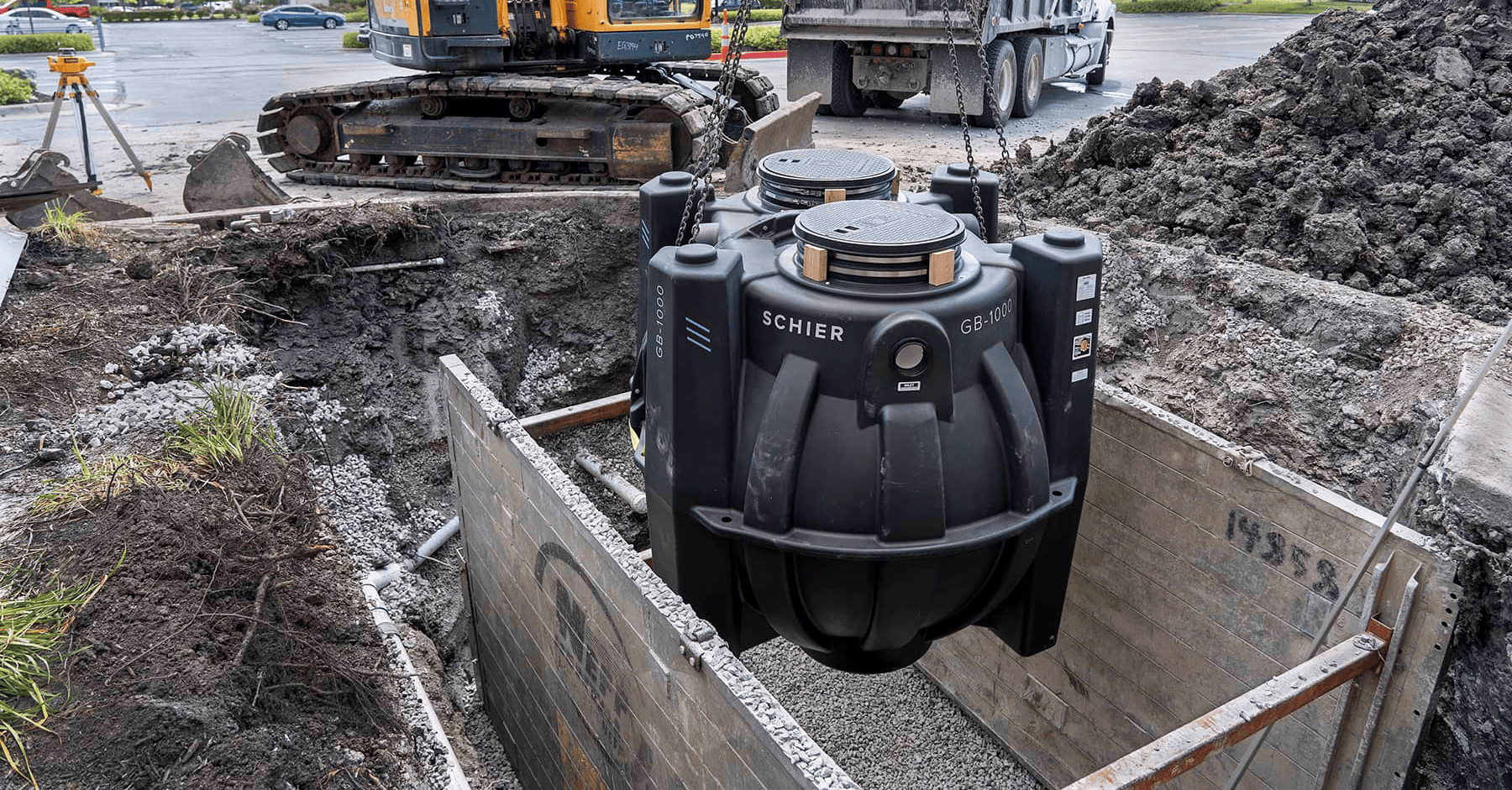January 24, 2024

Gravity grease interceptors play a crucial role in preventing fats, oils and grease (FOG) from entering the municipal sewer system from commercial kitchens, reducing the risk of clogs and environmental contamination. However, misconceptions about these interceptors persist. In this blog post, we'll explore the common myths surrounding gravity grease interceptors and shed light on the truth.
Let's start with the basics. A gravity grease interceptor is a passive device designed to capture and separate FOG from wastewater before it enters the sewer system. These interceptors are usually identified by their large holding volume in gallons and rely on the principle of gravity to separate the lighter FOG from the water.
The other category of interceptors is known as hydromechanical. These units increase separation performance through the use of flow control, air intake and baffles, which markedly decreases the time necessary to separate. Traditionally, the key differentiator is that hydromechanical units are performance-rated and gravity units are not.
Schier’s gravity units (GB-1000 and GB-1500) are dual-certified to both hydromechanical performance standards (ASME A112.14.3) and gravity design and structural standards (IAPMO/ANSI Z1001-2021)*. They are the first and only dual-certified 1,000 and 1,500 gallon units on the market, making them superior to other gravity grease interceptors that are not performance-certified.
 Common misconceptions about gravity grease interceptors
Common misconceptions about gravity grease interceptorsConcrete vs. polyethylene: The first common misconception is that all gravity grease interceptors are made of concrete. While concrete interceptors are indeed common, polyethylene gravity grease interceptors are gaining popularity due to their durability, ease of installation, and lower maintenance requirements. Concrete grease interceptors are problematic in that they are highly corrosive, whereas Schier’s polyethylene units carry a lifetime guarantee.
Retention time fallacy: One of the most widespread misconceptions is the belief that longer retention times in grease interceptors lead to better grease separation. In reality, retention time is not a reliable indicator of performance. The efficiency of grease separation depends on factors such as design, flow rates and proper maintenance.
Myth busted: Jurisdictions that require a 20–30 minute retention time don’t take flow rate into account. The GB-1000 is rated at 200 GPM with a liquid capacity of 1,000 gallons. If tested to the 200 GPM flow rate, retention time is 5 minutes. This means that according to gravity rules, the unit couldn’t meet the retention time requirement. Yet, this unit tested out at an efficiency exceeding 96%.
The "25% rule": The 25% rule suggests that a grease interceptor should be pumped out if the depth of the floating grease layer and the settled solids layer (combined) exceeds 25% of the interceptor’s total water column. However, this rule is considered junk science by experts in the field. Proper sizing and pumpout frequency depend on various factors, including the type of establishment, local regulations, and kitchen practices. A more accurate sizing method, like Grease Production Sizing Method, takes all these variables into account.
Myth busted: When tested to failure, grease interceptors have been proven to hold over 75% of the liquid capacity in grease, some of them hold over 90%.
Bigger is not always better: Another misconception is that a larger interceptor is always better. While a larger capacity may be necessary for high-grease-producing establishments, excessively oversized interceptors can lead to poor grease separation and higher maintenance costs. Proper sizing is the key to efficient and cost-effective grease management.
Myth busted: Oversizing can also lead to a build-up of hydrogen sulfide gas (H2S). H2S leads to corrosion (in concrete units), odor issues, chemical reactions and microbial issues, which damage both the interceptor and the conveyance system downstream.
Gravity grease interceptors must hold the Z1001 certification: Gravity grease interceptors are required to have the Z1001 certification*, ensuring that they meet industry standards for grease separation. It is crucial for users to check for this certification when selecting an interceptor. Most concrete units are not certified.
*ANSI Z1001-2018 is the fourth version of the standard that was first published in 2007. Before this, there was no third-party national standard for the construction of gravity grease interceptors. The important thing to remember is that this standard covers the design of the interceptor, not performance. For testing purposes, the standard only calls for the interceptor to be filled with water to ensure water tightness for certification. The unit must also have a minimum liquid volume of 300 gallons and have two compartments. Other design criteria would be structural strength, access openings, inlets and outlets, venting, partitions and baffles, air space, risers, covers and pipe connectors. All of these design elements are called out in detail to certify the product (concrete, fiberglass or thermoplastic) to the standard.
 Summary
SummaryGrease interceptors are vital tools in maintaining clean and efficient wastewater systems in high-grease-producing food service establishments. To dispel common misconceptions, we must recognize that not all interceptors are made of concrete, longer retention times don't necessarily equate to better performance, the "25% rule" is unreliable for sizing, and bigger is not always better. Understanding these facts is key to effective grease management, ensuring compliance with regulations, and protecting our environment from FOG pollution.